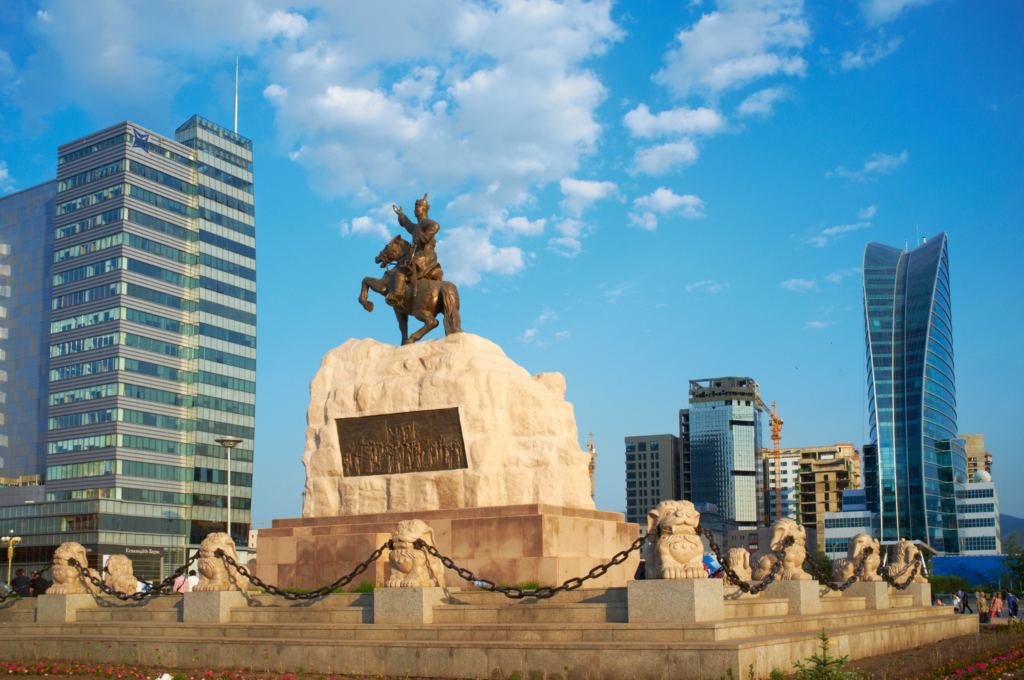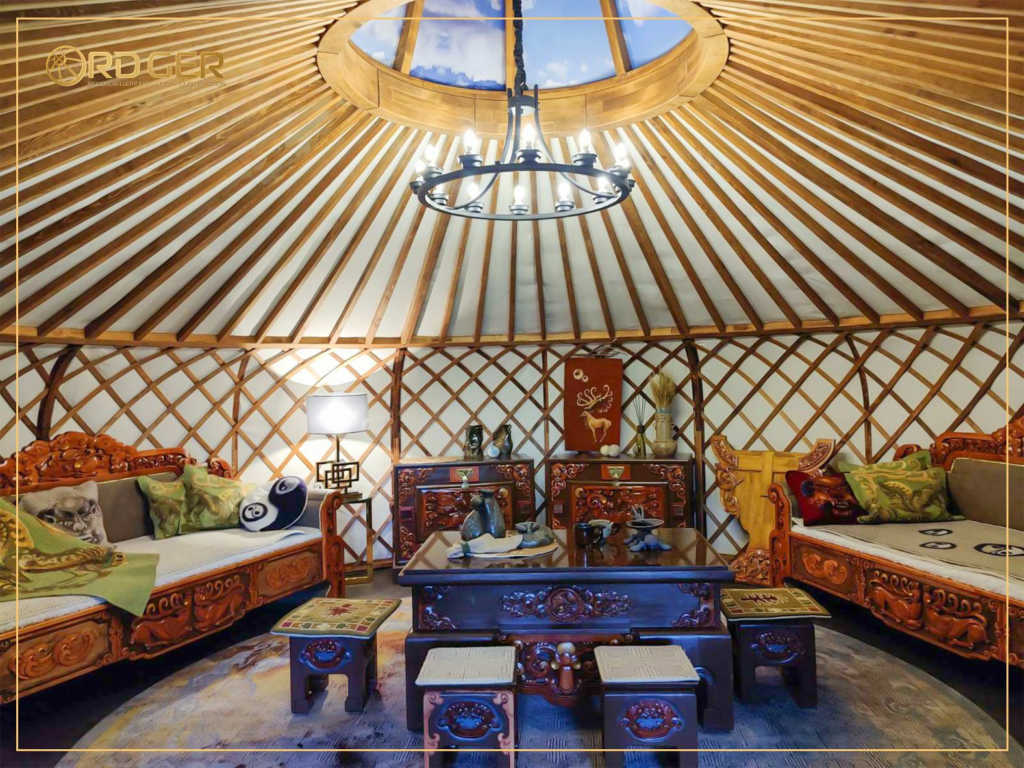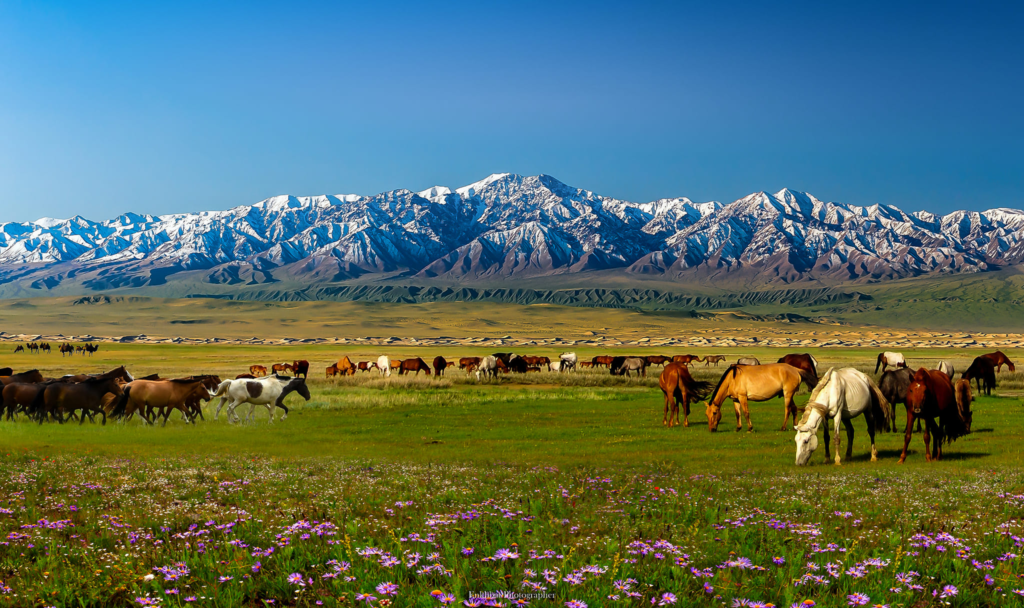Introducing Mongolian Geography
Dive into the diverse tapestry of Mongolian geography, where rugged mountains, vast steppe plains, and expansive deserts converge to create a landscape unlike any other. Situated at the crossroads of Siberian taiga and Central Asian prairie steppe, Mongolia boasts a rich array of natural ecosystems teeming with unique flora and fauna. Despite its recent emergence onto the global stage, Mongolia’s pristine wilderness and unparalleled biodiversity have begun to captivate the attention of international conservation organizations and nature enthusiasts alike. Let’s embark on a journey to explore the six distinct natural zones that define the geographical fabric of Mongolia.
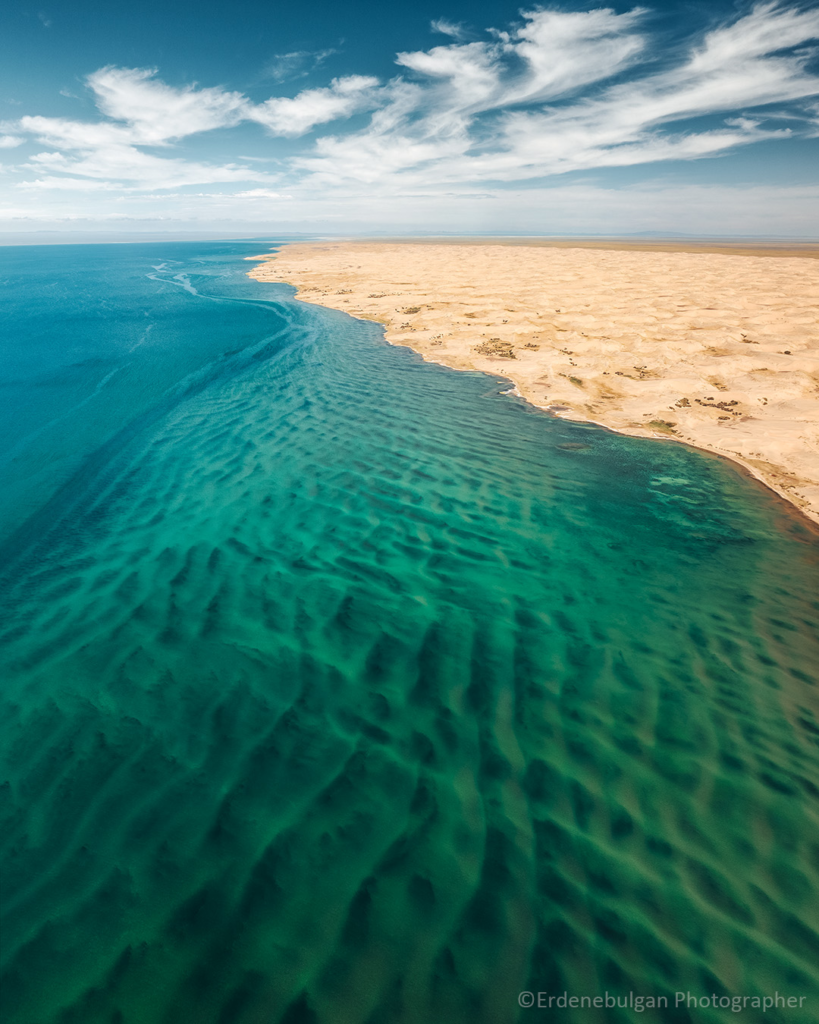
HIGH MOUNTAIN ZONE: Peaks and Permafrost
Mongolia’s mountainous terrain dominates the landscape, with the high mountain zone comprising approximately 5 percent of the country’s territory. Towering peaks, such as Khuiten Peak in the Far Western Altai, soar to dizzying heights of 14,350 feet, marking the highest point in Mongolia. These rugged mountains bear witness to the vestiges of past Ice Ages, with glacial valleys and ancient boulders dotting the landscape. Enduring harsh climates and short growing seasons, the high mountain zone harbors tundra, alpine-sedge meadows, and lichen-covered expanses, creating a habitat unlike any other.
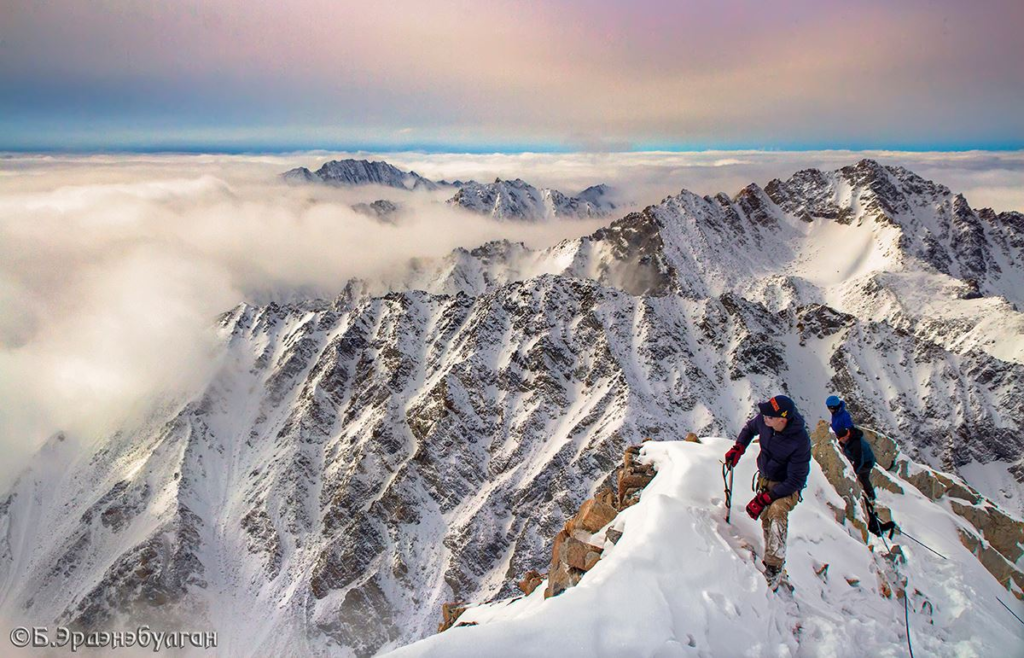
TAIGA (FOREST) ZONE: Verdant Enclaves in the North
Venture into northern Mongolia to discover the enchanting Taiga zone, which blankets approximately 5 percent of the country’s territory. Found in the Khentii Mountains and the pristine wilderness surrounding Lake Khuvsgul, the Taiga zone experiences cooler temperatures and higher precipitation levels compared to the rest of Mongolia. Here, dense forests of coniferous trees thrive amidst rolling hills and pristine lakes, providing refuge for a variety of wildlife species, including bears, elk, and Siberian deer.

FOREST STEPPE ZONE: Where Steppe Meets Woodland
Nestled between the Central Asian prairie steppe and the Eastern Siberian forests lies the forest steppe zone, encompassing around 25 percent of Mongolia’s territory. This ecologically diverse region boasts a harmonious blend of grasslands and woodlands, with the Khangai and Khentii mountain ranges serving as its picturesque backdrop. Here, lush pastures, dense forests, and meandering rivers converge to create an ideal habitat for both herders and wildlife alike.
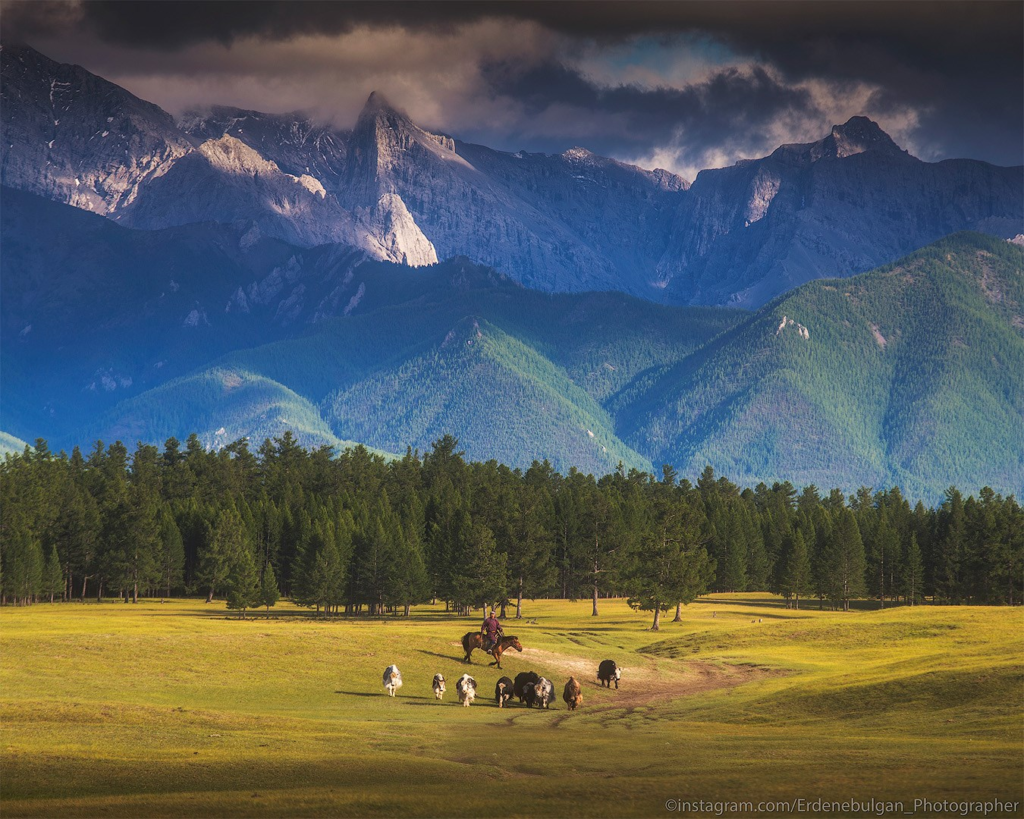
STEPPE ZONE: Endless Horizons of Grassland
Stretching across Mongolia’s far-eastern expanse, the steppe zone dominates nearly the entire landscape. Extending from the Khangai and Khan Khukhii Mountains to the Depression of the Great Lakes, Mongolia’s steppe is a vast expanse of rolling grasslands that serves as the lifeblood of the nation’s nomadic herders. Despite its seemingly boundless beauty, the steppe is vulnerable to environmental threats such as overgrazing and human encroachment, highlighting the delicate balance between nature and civilization.

DESERT STEPPE ZONE: The Arid Heartland
In the arid expanses between the steppe and desert zones lies the desert steppe zone, comprising over 20 percent of Mongolia’s territory. Here, the landscape is characterized by salt pans, dry riverbeds, and rugged terrain, creating a harsh yet hauntingly beautiful environment. Despite the challenging conditions, nomadic herders eke out a living amidst the harsh desert landscape, embodying the resilient spirit of Mongolia’s people.
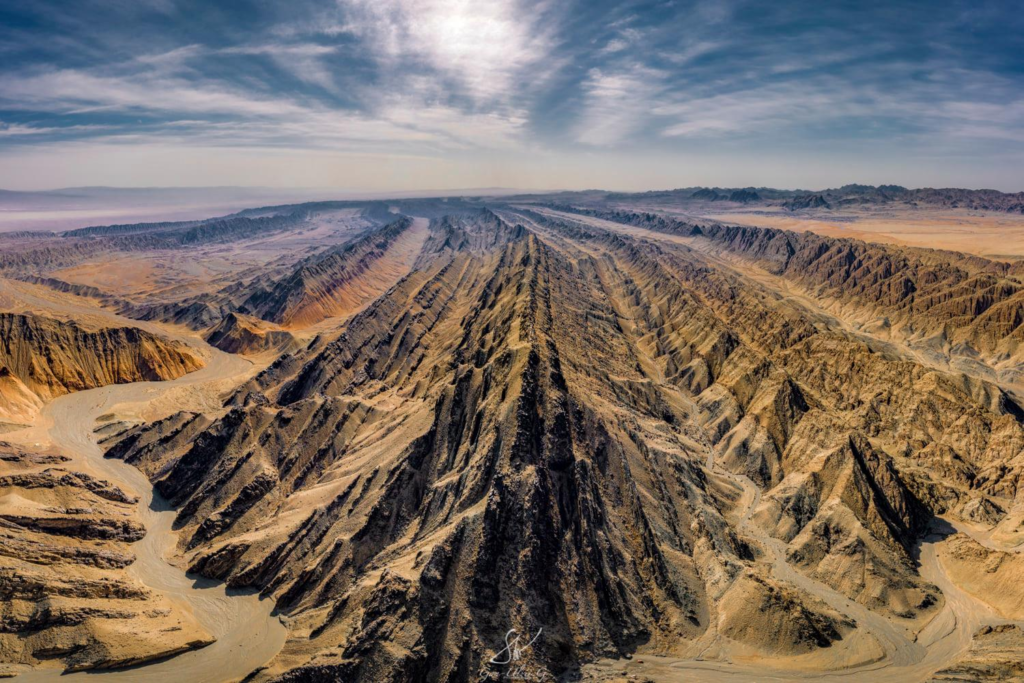
DESERT ZONE: The Fabled Sands of the Gobi
Enter the realm of the Gobi Desert, one of the world’s great arid landscapes that sprawls across southern Mongolia and northeastern China. From rocky mountain outcrops to vast expanses of sand dunes, the Gobi is a land of stark contrasts and unparalleled beauty. Despite its harsh climate and sparse vegetation, the Gobi is home to a myriad of unique species, including the elusive Gobi bear and the iconic wild camel. Explore this otherworldly landscape, where temperatures soar to blistering highs in summer and plummet to bone-chilling lows in winter, and discover the raw beauty of Mongolia’s most iconic desert.
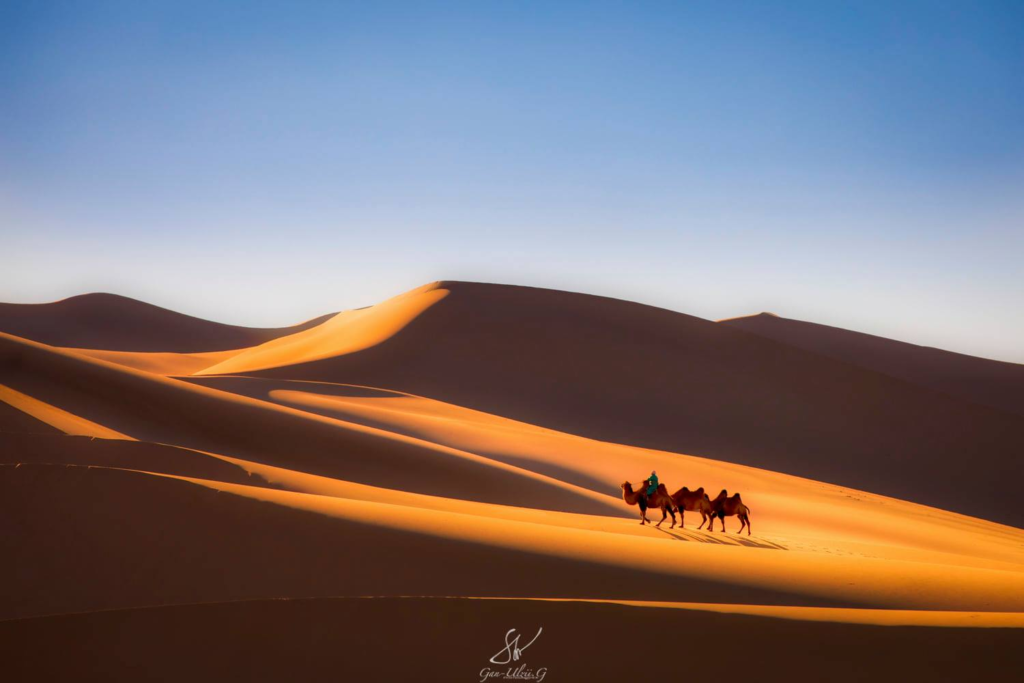
The Tapestry of Mongolian Geography
In conclusion, the geographical tapestry of Mongolia is a testament to the incredible diversity and resilience of the natural world. From soaring mountain peaks to windswept deserts, each landscape tells a story of adaptation and survival in one of the world’s most unforgiving environments. As we unravel the mysteries of Mongolian geography, we gain a deeper appreciation for the delicate balance between human civilization and the natural world, and the importance of preserving these pristine wilderness areas for future generations to explore and enjoy.
Visit our TOURS page to explore our tours that are a perfect fit for your accommodation.





